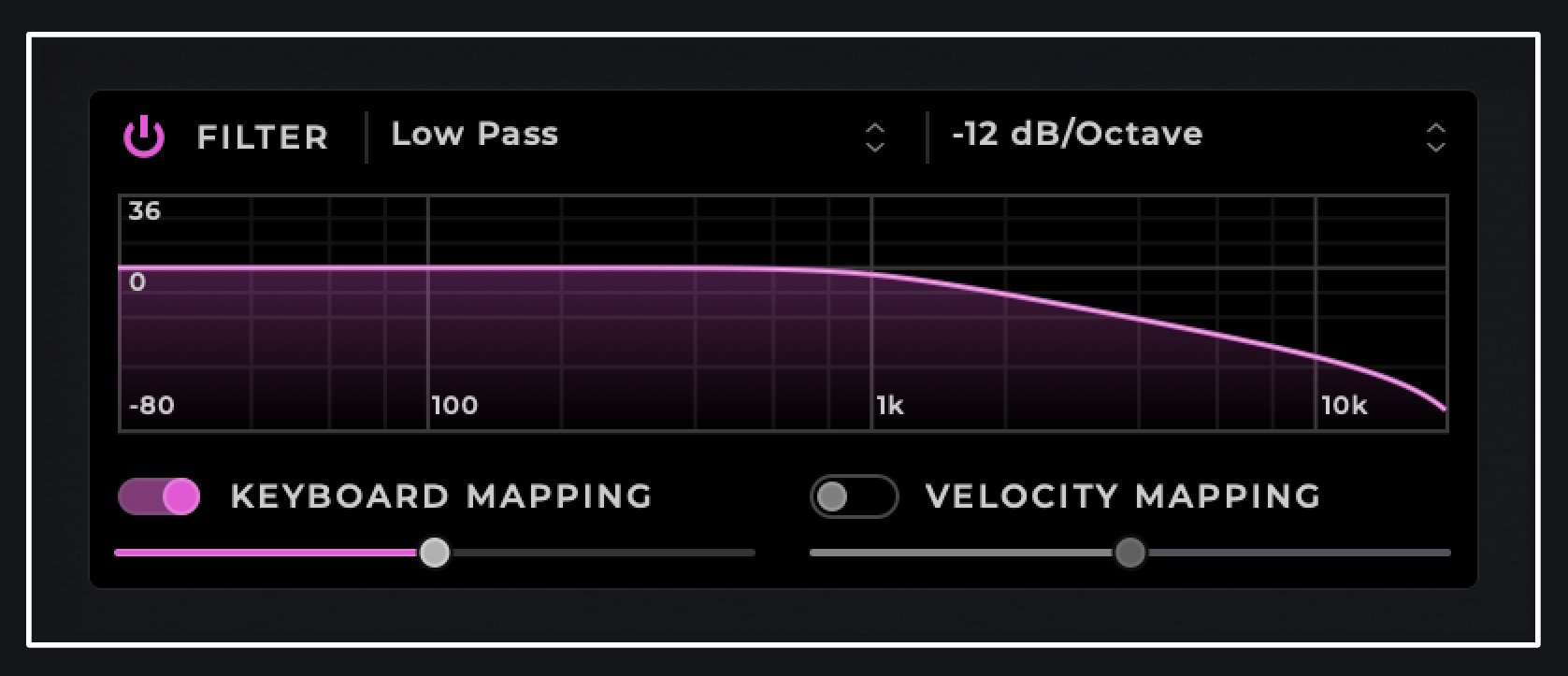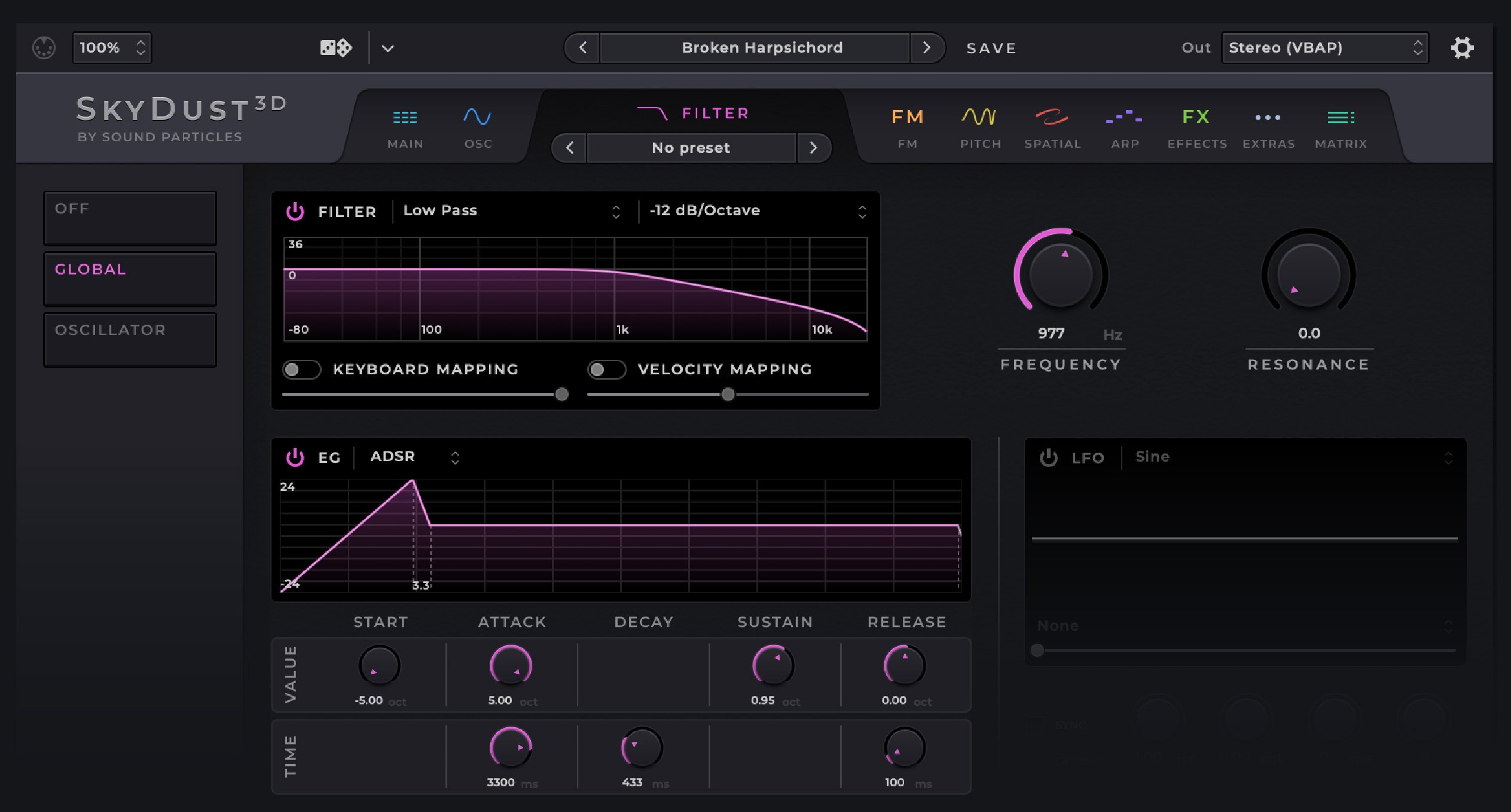Tutorial: Programming a Synth - Filters Explained - Part 2 [4/12]
Welcome to the Synth Tutorial series! If you're new to the world of synthesizers or just getting started with our SkyDust 3D, you're in the right place. In this series, we'll walk you through the fundamentals of sound synthesis using our SkyDust 3D. This is the second article, a continuation on Filters. You can access the first article here Filters - Part 1.
Now that we have a foundation on filters, let's dive into another crucial aspect of synthesizers: the interplay between filters and envelope generators (EGs). This will allow us to shape our sounds dynamically and expressively, unlocking a vast range of sonic possibilities.
Understanding Filter Behaviour
Before we explore the interplay between filters and envelope generators, it's important to understand the two different behaviours that filters can exhibit. When working with filters in synthesis, you might desire either a static filter or an adaptive filter, depending on your creative intentions.
A static filter behaves similarly to an equalizer, regardless of the note being played. This can be useful for creating formant-like sounds, where specific frequencies are emphasized or attenuated. When playing a lower note, more harmonics pass through the filter, while playing a higher note results in only the fundamental and a few harmonics remaining.
On the other hand, an adaptive filter adjusts its behaviour based on the note being played. For example, you might want the first few harmonics to pass through without attenuation and then gradually decrease the higher harmonics. In this case, the frequency of the filter needs to change to accommodate different notes.
Using Keyboard Mapping
In the case of SkyDust, Sound Particles' synthesizer, there is a convenient keyboard mapping feature that allows you to choose between fixed and adaptive filter behaviour. By enabling the keyboard mapping and adjusting the settings, you can control whether the filter remains static or adapts to the notes being played. This provides a powerful tool for sculpting your sound and achieving the desired tonal qualities.

Exploring Envelope Generators
Now that we have a good understanding of filter behaviour, let's explore the role of envelope generators in shaping sound. Envelope generators allow you to modulate various parameters over time, and they work hand in hand with filters to create dynamic changes in your sounds.
Traditionally, envelope generators are used to control the amplitude or volume of a sound, allowing you to shape its attack, decay, sustain, and release. However, they can also be used to modulate filter parameters and achieve interesting effects. By applying an envelope generator to the filter, you can dynamically control its settings throughout the duration of a note.
Dynamic Filtering with Envelope Generators
One common technique is to create a brighter sound during the attack phase by fully opening the filter, and then gradually reduce the filter to achieve a mellower, sustained sound. This mimics the characteristics of instruments like pianos or guitars, where the initial attack produces a brighter timbre, followed by a more mellow and sustained tone.
In SkyDust, you can enable the envelope generator and use the ADSR (Attack, Decay, Sustain, Release) settings to shape the behaviour of the filter. You can define the starting position of the filter and specify how it should change over time, resulting in dynamic and expressive sound transformations.

Mastering Filters
By combining filters with envelope generators, you unlock a vast range of sonic possibilities in your synthesis endeavors. Whether you're aiming for static filter effects or adaptive tonal changes, understanding the interplay between filters and envelope generators empowers you to craft unique and captivating sounds.
Remember, the concepts discussed here apply not only to SkyDust but also to any synthesizer that offers filter and envelope modulation capabilities. So, don't hesitate to experiment and explore the fascinating world of dynamic filtering in your musical creations.
Once you've mastered Filters, move forward to the next tutorial about LFOs.
See you on the next tutorial!
Stay tuned and join the revolution!
Topics: Sound Particles, Sound Design, Tutorials, 3D audio, Surround Sound, Music, synth, virtual instrument, synthesizer, SkyDust3D

